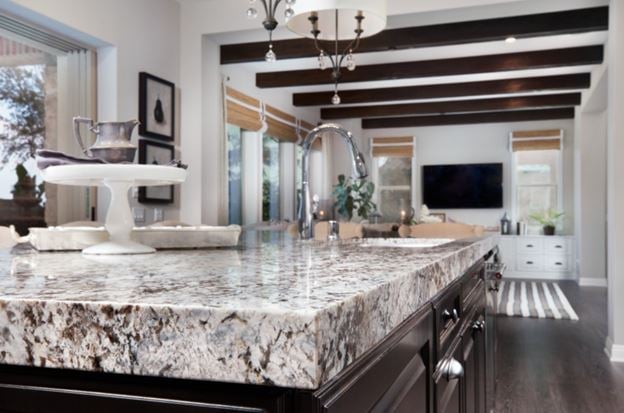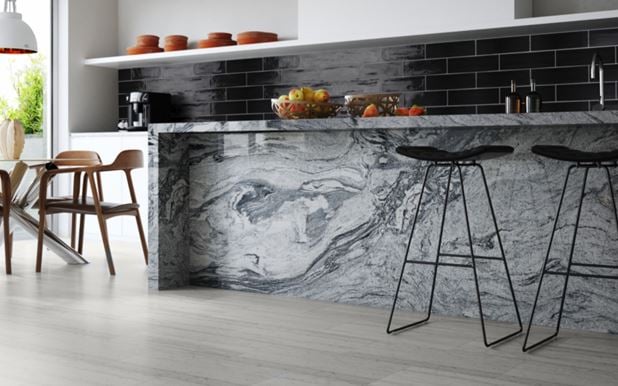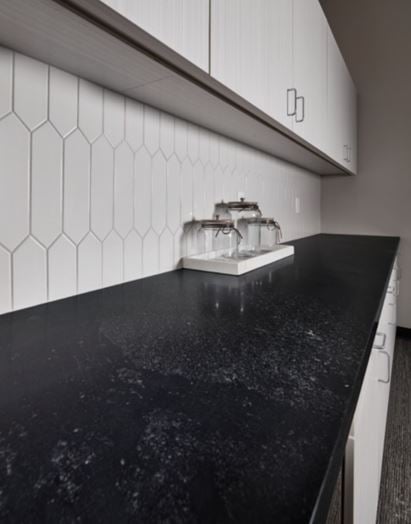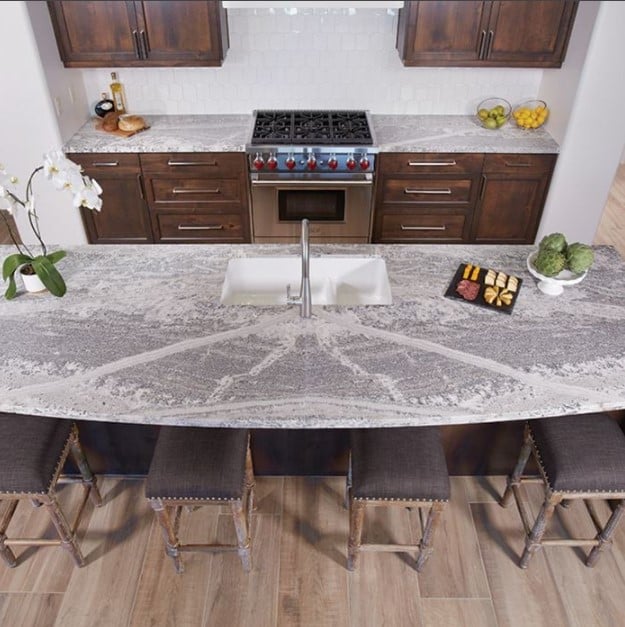
Granite is a classic countertop material that remains popular due to its timeless style, durable nature and one-of-a-kind quality. If you’re thinking about using granite in your kitchen, bathroom or another room of your home, you may wish to learn more about this unique natural stone. Let’s talk about where granite comes from, what type of rock it is and how it goes from beneath the earth to atop your counters.
What Is Granite?
Granite is a type of igneous rock. This means that it was formed in the earth over time by slowly cooling magma. As the magma cools, it hardens into granite, which is one of the most common types of stone found within the earth.
Named for its granular texture, granite is composed of a variety of different minerals. It usually includes quartz, mica, feldspar and hornblende. These minerals give granite its distinctive coarse-grained texture as well as its innate durability and dense structure.

What Does Granite Look Like?
Granite’s crystalline texture features crystallized minerals of many colors. With grains varying from small flecks to larger crystals, some varieties of granite also have prominent veining or other patterns of “movement,” while some are more consistent.
Quartz, which gives granite its durability and dense composition, is responsible for colors including white and gray. Feldspar gives granite an opaque white, pink, beige or brown color. Flakes of mica in the stone will appear distinctively shiny and reflective, with tones of either clear, silver or black. Finally, hornblende grains will look dark in color, such as green, black or brown.
Together, these minerals give granite its range of color possibilities and its unique, granular appearance. Granite, as with every natural stone, is inherently one-of-a-kind from slab to slab. While some varieties of granite are fairly consistent, others have visible and dramatic differences in colors and patterns from one slab to the next.

How Is Granite Mined?
Granite is mined from quarries in Italy, China, the US, Brazil, Canada and a range of other countries. Using powerful machines, rough granite blocks are hewn from the earth and are then transported to granite mills to be cut into slabs about 7-9 feet long. The slabs are then polished and sent to slab yards and warehouses. The final step is fabrication, in which your selected slab is cut to the size of your countertop.

What Stones Are Similar To Granite?
Granite is a popular, classic countertop material rivaled mainly by marble and quartz. These countertop options are similar to granite in some ways but also have important distinctions.
Marble is a type of natural stone just like granite. It is slightly softer and more porous than granite, making it more prone to stains and scratches. While some varieties of granite and marble can look similar, they are generally quite different from each other.
Quartz, on the other hand, is not a natural stone. This so-called “engineered stone” is man-made by combining natural quartz crystals with resins and pigments to create the desired color and pattern. Just as durable as granite if not more so, quartz can even be manufactured in styles that mimic the appearance of granite.
See what your home would look like with new granite countertops with the Just Imagine Visualizer from Arizona Tile.





